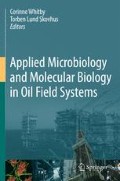Abstract
High crude oil prices, concern over depletion of world reserves, and growing apprehension about the environment, encouraged the search for alternative energy sources that use renewable natural resources to reduce or replace traditional fossil fuels such as diesel and gasoline (Hill et al., 2006). Among renewable fuels, biodiesel has been attracting great interest, especially in Europe and the United States. Biodiesel is defined by the World Customs Organization (WCO) as ‘a mixture of mono-alkyl esters of long-chain [C16-C18] fatty acids derived from vegetable oils or animal fats, which is a domestic renewable fuel for diesel engines and which meets the US specifications of ASTM D 6751’. Biodiesel is biodegradable and non toxic, produces 93% more energy than the fossil energy required for its production, reduces greenhouse gas emissions by 40% compared to fossil diesel (Peterson and Hustrulid, 1998; Hill et al., 2006) and stimulates agriculture.
Access this chapter
Tax calculation will be finalised at checkout
Purchases are for personal use only
References
Energy Institute (2008) Implications of biodiesel and bioethanol on microbial spoilage and corrosion within the fuel distribution chain and end use – a literature review. Energy Institute, London
Gerpen JHV, Hammond EG, Yu L, Monyem A (1996) Determining the influence of contaminants on biodiesel properties. Society of Automotive Engineers Technical Paper Series No. 971685, Warrendale, PA
Gutiérrez JA, Costa MM, Figueras A, Albaigés J, Viñas M, Solanas AM, Novoa B (2008) Alcanivorax strain detected among the cultured bacterial community from sediments affected by the ‘Prestige’ oil spill. Mar Ecol Prog Ser 362:25–36
Hill J, Nelson E, Tilman D, Polasky S, Tiffany D (2006) Environmental, economic, and energetic costs and benefits of biodiesel and ethanol biofuels. Proc Natl Acad Sci USA 103:11206–11210
Klofutar B, Golob J (2007) Microorganisms in Diesel and in Biodiesel Fuels. Acta Chimica Slovenica 54:744–748
LAW N 11097 of 13/01/2005 published on 14/01/2005 The introduction of biodiesel in the Brazilian energy matrix, amending the 9478 Law of 06.08.1997, 9847, 26.10.1999, 10636, 30.12.2002 among other provisions. Daily J 142, 10 – Section: 1.0, 8 14/01/2005
Lee JS, Ray RI, Little BJ (2009) Microbiological and corrosity characterisations of biodiesels and advanced diesel fuels. Corrosion 2009, Paper 09529 (Houston, TX: NACE International, 2009)
Lee JW, Yeomans WG, Allen AL, Deng F, Gross RA, Kaplan DL (1999) Biosynthesis of novel exopolymers by Aureobasidium pullulans. Appl Environ Microbiol 65:5265–5271
Mazur LP, Silva DD, Grigull VH, Garcia MCF, Magalhães TO, Wagner TM, Einloft S, Dullius J, Schneider AL, Pezzin APT (2009) Strategies of biosynthesis of poly(3-hydroxybutyrate) supplemented with biodiesel obtained from rice bran oil. Mater Sci Eng C 29:583–587
Muthukumar N, Maruthamuthu S, Ilangovan A, Palaniswamy N (2007) Impact of micelles on the biocidal efficiency in a diesel–water interface. Surf Interface Anal 39:533–541
Muyzer G, Smalla K (1998) Application of denaturing gradient gel electrophoresis (DGGE) and temperature gradient gel electrophoresis (TGGE) in microbial ecology. Antonie van Leeuwenhoek 73:127–141
Peterson CL, Hustrulid T (1998) Carbon cycle for rapeseed oil biodiesel fuels. Biom Bioen 14:91–101
Ward DM, Bateson MM, Weller R, Roberts R (1992) Ribosomal RNA analysis of microorganisms as they occur in nature. Adv Microb Ecol 12:219–286
Wayne LG, Brenner DJ, Colwell RR, Grimont PAD, Kandler O, Krichevsky MI, Moore LH, Moore WEC, Murray RGE, Stackebrandt E, Starr MP, Truper HG (1987) Report of the ad hoc committee on reconciliation of approaches to bacterial systematics. Int J Syst Bacteriol 37:463–464
Zhang X, Peterson C, Reece D, Haws R, Müller G (1998) Biodegradability of biodiesel in the aquatic environment. Trans ASAE 41:1423–1430
Acknowledgements
We thank Petrobras for funding this work.
Author information
Authors and Affiliations
Corresponding author
Editor information
Editors and Affiliations
Rights and permissions
Copyright information
© 2010 Springer Netherlands
About this paper
Cite this paper
Lutterbach, M.T., Galvão, M.M. (2010). Fuel for the Future: Biodiesel – A Case study. In: Whitby, C., Skovhus, T. (eds) Applied Microbiology and Molecular Biology in Oilfield Systems. Springer, Dordrecht. https://doi.org/10.1007/978-90-481-9252-6_27
Download citation
DOI: https://doi.org/10.1007/978-90-481-9252-6_27
Published:
Publisher Name: Springer, Dordrecht
Print ISBN: 978-90-481-9251-9
Online ISBN: 978-90-481-9252-6
eBook Packages: Chemistry and Materials ScienceChemistry and Material Science (R0)

